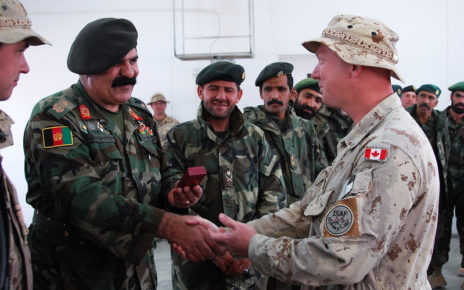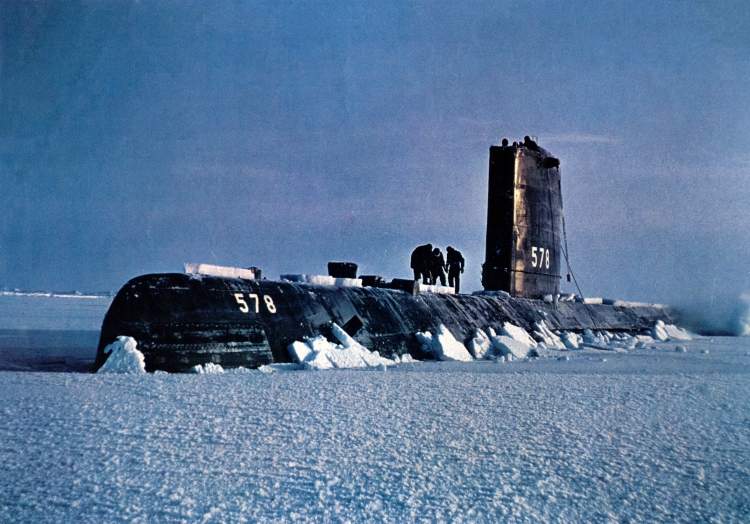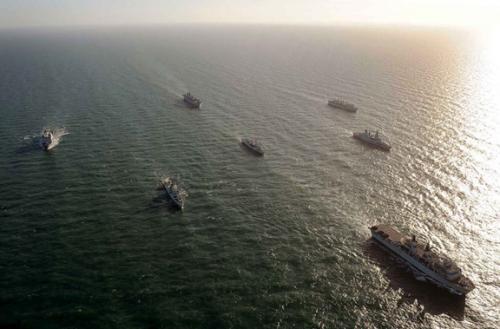Canada stands at a crossroads. Global security threats are growing, and the Arctic—a cornerstone of our sovereignty—is becoming a contested battleground. Despite these challenges, Canada’s defense spending remains woefully inadequate, undermining our ability to protect our borders, honour our NATO commitments, and lead on the world stage.
At the recent Halifax International Security Forum (HISF), Minister of National Defence Bill Blair underscored Canada’s commitment to defending sovereignty and collaborating with allies. But words must be matched with action. From meeting NATO’s 2% GDP defense spending benchmark to addressing the Arctic’s vulnerabilities, Canada must prioritize investment in its military.
The Arctic: A Strategic Frontier
The Arctic is no longer simply a frozen wilderness but a contested region of immense geopolitical importance. Russia, with its nuclear-armed submarines and 17 Arctic bases, has militarized the region, while China has begun mapping the Arctic seabed under the guise of scientific research. Together, they threaten the stability of the region.
In stark contrast, Canada lacks the infrastructure to secure its Arctic territory. Ports like Nanisivik, originally intended to enhance Arctic operations, remain largely unusable due to delays and underfunding. Minister Blair rightly emphasized at HISF that Arctic security isn’t just about weapons; it’s about sustainable infrastructure, like runways, ports, and fiber-optic communication. Canada’s updated defense policy, ‘Our North, Strong and Free’, promises $8.1 billion over five years to address these shortcomings. Yet, without swift implementation, these investments may come too late to counter the rapidly evolving threats in the region.
NATO Commitments and Economic Stability
Canada’s failure to meet NATO’s 2% defense spending guideline has not gone unnoticed. Criticism has come not only from the US, where Senator James Risch and Representative Mike Turner have called Canada a “freeloader,” but also from our transatlantic allies. Recently, the French ambassador to Ottawa, Michel Miraillet, called out Canada for “navel-gazing” and being “too comfortable” because of reliance on its neighbour. These comments reflect the growing impatience within NATO, and this perception weakens Canada’s standing in the alliance. Moreover, it risks alienating key partners like the United States, who has been turning most of its attention to their Indo-Pacific strategy, leaving little room for the Canadian defense.
Over the past several weeks, President Donald Trump has already suggested he may use tariffs to pressure Canada into increasing defense spending, and with roughly 77% of Canada’s exports destined for the U.S., such measures could devastate our economy. Meeting NATO’s spending benchmark thus isn’t just about satisfying allies; it’s about securing our economy. Investments in the North American Aerospace Defense Command (NORAD) modernization and Arctic infrastructure would create jobs, spur innovation, and ensure Canada is prepared to meet future challenges.
Defense Spending as an Economic Opportunity
Defense spending isn’t just a cost—it’s an investment in prosperity. Arctic infrastructure projects, such as deep-water ports and energy plants, would create jobs and enhance Canada’s economic resilience. Modernizing NORAD, including advanced radar systems and missile defense capabilities, would spur innovation in aerospace and defense technologies.
Minister Blair aptly tied defense to prosperity at HISF, stating, “We’ve got to make this investment, and I think we are presented with an opportunity…to get this right.” By increasing defense spending, Canada can secure its sovereignty and reap economic benefits that extend far beyond the military.
Engaging Canadians on Defense
One of Canada’s greatest challenges is public disengagement from defense issues. Decades of relative peace have fostered a belief that defense spending is unnecessary. However, the growing militarization of the Arctic and the risk of economic retaliation from the United States make this view untenable.
The government must connect defense spending to tangible outcomes that resonate with Canadians: jobs, economic stability, and the protection of sovereignty. As Adm. Linda Fagan noted, the activity seen in the Arctic today would spark outrage if it occurred off the East or West Coasts of the United States. Canadians must realize that these threats are real and require immediate action.
Conclusion
Canada’s defense spending is a reflection of its priorities, and right now, we’re falling short. From Arctic security to NATO commitments, the challenges we face demand bold investments and decisive action. Minister Blair’s remarks at HISF capture the urgency of the moment: “We will invest in the modern military capabilities needed to deliver security to Canadians at home and protect Canadian interests around the world.” Now is the time to turn those words into action. Canadians must demand more from their leaders. Defense spending is not just about security—it’s about safeguarding our future. The cost of inaction is far greater than the investments required to keep Canada strong, free, and prepared to face an uncertain world.
Photo: Sign at the point where the railroad crosses the US-Canada border at Peace Arch Park (2007) via Wikimedia Commons. Licensed under CC BY-SA 3.0.
Disclaimer: Any views or opinions expressed in articles are solely those of the authors and do not necessarily represent the views of the NATO Association of Canada.




